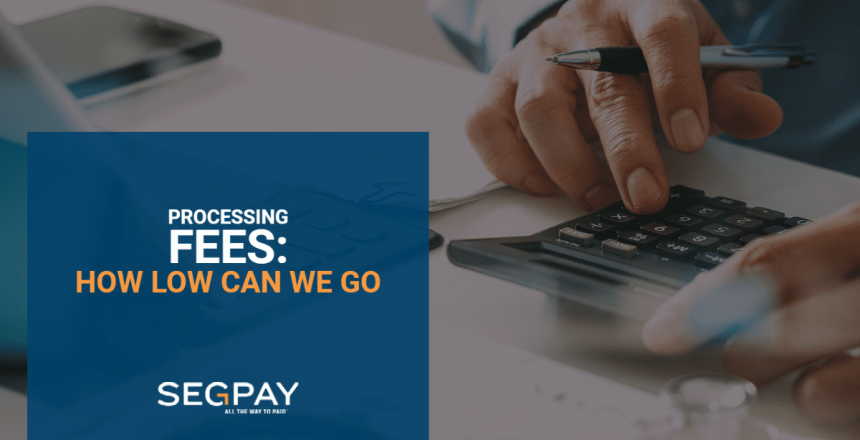Understanding Pricing and The Top Three Things that Impact Cost
- Interchange Plus Plus (IC++) Pricing / Tiered Pricing
- Location
- Payment Facilitator Pricing Packages
- 5 minute read
My favorite client, who does a considerable amount of volume with us, always comes back to me at the end of the year looking to be rewarded for their increase in volume. While I’d love to help them because of the client’s size and volume, I have hit the wall on rate reductions. There is no longer any wiggle room for a price break even though there is a continuous increase to its volume. So, my annual rate reduction call was not going to be exactly as they had hoped for, and I needed to have a heart to heart where we could discuss the cost of processing rates and the value of the Segpay service. Our call went well, and my merchant now has a good understanding of rate structure and the costs associated with processing a transaction.
This process made me realize a lot of people are confused about rates. For example, the difference in the cost of processing regionally (EU, UK, and U.S.) and whom you’re processing with. How do you know if you’re being treated fairly by your provider? This month we break down different pricing structures to help you be better prepared to discuss rates with your provider.
When you’re looking at your processing costs, a good idea is to step back and look at the bigger picture. Do you have the support of your provider and do they stay on top of looming issues that could impact your business?
What is Interchange Plus Plus (IC++) Pricing?
Many acquirers like to present interchange ++ pricing, which stands for interchange + card scheme fees + acquirers’ markup. What does this mean exactly? An interchange fee is a fee charged by the consumer’s issuing bank to accept a credit or debit transaction. Card scheme fees are the cost to process the transaction on the card brand’s networks. The final plus is the acquirers’ mark up.
Components of Interchange ++ pricing
- Protection – Until a merchant really starts processing, the acquirer won’t have a feel for the margin on the account. So, banks like to charge Interchange ++ pricing because it protects their margin.
- Card – A credit card, rewards card or debit card can have different interchange rates. Also, both Visa and MasterCard have different interchange fees and they update these twice a year.
- Business Category / Merchant Category Code (MCC) – These codes are assigned to businesses and broken out into categories such as groceries, charity, gas stations, fast food restaurants, travel, and mail order telephone order (MOTO)- which is where all high-risk transaction fall.
Tiered Pricing
U.S. acquirers will also offer tiered pricing. This pricing structure is similar to the flat rate pricing structure, but instead of one rate, there are a few. Your acquirer will bundle 300+ possible interchange rates into three buckets: qualified, mid-qualified, and non-qualified. Each transaction will then be priced based on the rate bucket it falls into. This is another way for the acquirer to protect their margin and offers a more simplified rate structure for their merchant.
Location
Where you live and where you’re doing business can impact rates. In 2015, the European Commission began limiting the amount of interchange fees that can be charged on transactions that are processed by an EU consumer through an EU acquirer. These same interchange fees are now capped at .20% on consumer debit cards and .30% on commercial debit cards. In addition, the regulation requires the acquirer to detail the cost associated with each transaction for full transparency. For this subset of traffic, the cost associated with processing transactions can be two to three percent less than acquiring costs in the United States or transactions processed through an EU acquirer, even though the consumer resides outside of the UE.
Payment Facilitator Pricing Packages
When you work with a payment facilitator, pricing is typically presented as a single bundled rate that accounts for the bank cost of Interchange ++, gateway fees and premium for auxiliary services offered, such as customer service, risk management, PCI compliance and marketing tools. Your payment facilitator also carries the burden of taking the risk on the account with the bank and is held accountable by the regulatory bodies that oversee consumer protection, like the Federal Trade Commission. In our case, the Central Bank of Ireland for our European business and the UK Financial Conduct Authority for our UK business. This model allows a merchant to know exactly what their pricing is and what features they will receive so they can focus on their content and technology platform.
Conclusion
When it comes down to it, there’s more to our business than just rates. My favorite acquirers to work with do not offer us the lowest rates. Instead, they provide us with the benefits of quick turn around on approvals, availability for calls and the sense that they genuinely care about our business. They make us feel like they have our back. When you’re looking at your processing costs, its a good idea to step back and look at the bigger picture. Do you have the support of your provider and do they stay on top of looming issues that could impact your business? This level of customer service cannot be measured in basis points. But from experience, I can tell you that the feeling of security is priceless.



